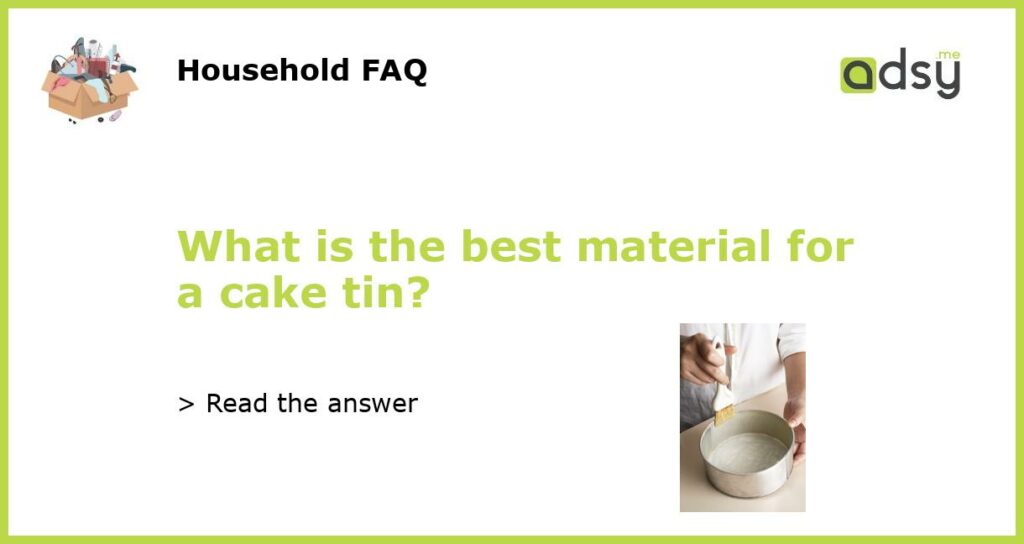Aluminum Cake Tins: Lightweight and Efficient for Baking
When it comes to choosing the best material for a cake tin, aluminum is a popular choice among bakers. Aluminum cake tins are known for their lightweight nature, making them easy to handle and maneuver in the kitchen. Additionally, aluminum conducts heat very efficiently, ensuring that your cakes bake evenly and to perfection.
Aluminum cake tins are available in various shapes and sizes, allowing for versatility in baking. Whether you’re making a round birthday cake or a rectangular loaf, you can easily find an aluminum cake tin that suits your needs.
One of the key advantages of aluminum cake tins is their affordability. Compared to other materials like stainless steel or silicone, aluminum cake tins are relatively inexpensive, making them an attractive option for both amateur and professional bakers.
Stainless Steel Cake Tins: Durable and Long-Lasting
If durability is a top priority for you, then stainless steel cake tins are worth considering. Unlike aluminum cake tins, stainless steel is a much stronger and sturdier material, which means it is less likely to dent or warp over time.
Stainless steel cake tins are also resistant to rust and corrosion, making them a long-lasting investment for your kitchen. With proper care and maintenance, a stainless steel cake tin can serve you for years, providing a reliable baking companion.
Additionally, stainless steel cake tins are usually dishwasher safe, which makes cleaning up after baking a breeze. This is a definite advantage for busy bakers who prefer an easy and convenient cleanup process.
Silicone Cake Tins: Flexible and Non-Stick
For those looking for a non-stick baking experience, silicone cake tins are an excellent choice. Silicone is a flexible material that easily releases baked goods, ensuring that your cakes retain their shape and texture without sticking to the tin.
Another advantage of silicone cake tins is their heat resistance. They can withstand high temperatures without melting or deforming, giving you peace of mind while baking. Silicone is also a great insulator, so your cakes will have a more even bake without any burnt edges.
Furthermore, silicone cake tins are versatile and can be used in the oven, microwave, and freezer. Whether you’re making a cake, a jelly, or even frozen desserts, a silicone cake tin offers the convenience of being able to use it in various cooking scenarios.
Glass Cake Tins: Great for Even Baking and Stylish Presentation
Glass cake tins have become increasingly popular in recent years due to their ability to provide even heat distribution. The transparent nature of glass allows you to monitor the baking process without opening the oven, which helps maintain a consistent temperature throughout.
Another advantage of glass cake tins is their versatility. They can be used for both baking and serving, making them a stylish addition to your table. The clear glass also enhances the presentation of your cakes, allowing you to showcase your baking skills.
It’s worth noting, however, that glass cake tins may take slightly longer to heat up compared to other materials. Additionally, they can be more fragile and prone to breaking if not handled with care.
Non-Stick Coated Steel Cake Tins: Combining Durability and Easy Release
If you’re seeking the benefits of both durability and non-stick properties, non-stick coated steel cake tins are an ideal choice. These cake tins are usually made from steel or metal coated with a layer of non-stick material such as Teflon, ensuring easy release of your baked goods.
Non-stick coated steel cake tins provide the durability and strength of steel, preventing warping and ensuring a long lifespan. The non-stick coating also makes cleaning a breeze, as most of the residue can be wiped away with minimal effort.
It is important to note that when using non-stick coated steel cake tins, you should avoid using metal utensils that can scratch the coating. Opt for silicone or wooden tools to ensure the longevity of the non-stick surface.






